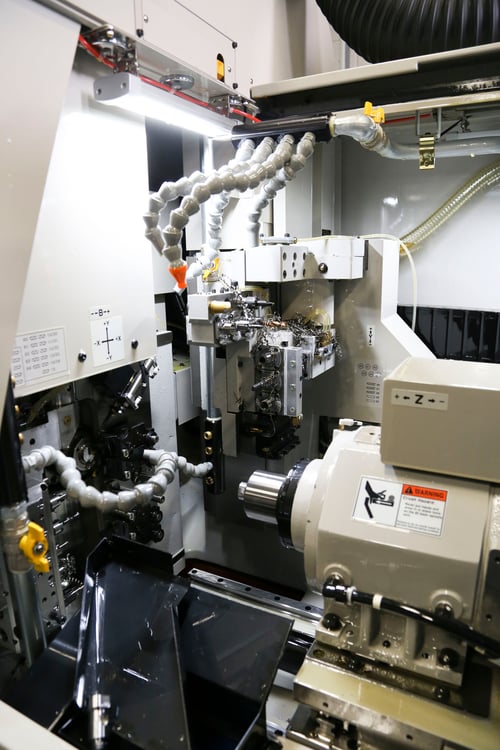
Swiss-style, or sliding headstock, turning machines differ from fixed headstock lathes in that the cutting tool remains fixed while the bar stock is fed through a guide bushing. This method enables greater support, to reduce vibration and tool deflection for high-volume production of very accurate parts. These Swiss-style machines excel in unattended, and lights-out manufacturing of medical device components, dental implants and parts for aerospace and other critical industries.
When choosing a Swiss-style turning machine that will provide consistent accuracy and trouble-free operation, look for details in both the design and construction like these found in Nomura machines.
1. For exceptional strength and stability, Nomura spindles are made from SCM 415 Chrome Molybdenum. The outside of the spindle is heat-treated at one temperature, and the inside hardened to a different degree. This 2-step method assures superior durability.
2. The Nomura guiding system uses a linear guide with preloaded roller pads to enable the headstock to move smoothly and accurately, while the sliding mechanism absorbs more of the harmonic vibrations generated by high-speed bar stock rotation.
3. For greater guiding surface smoothness and flatness, Nomura uses a 200-year old hand scraping technique to produce an ultra-precise surface with sub-micron unevenness of less than 0.0001mm.
4. Nomura Swiss-style lathes make tool setting faster and easier by including a proprietary, outboard tool pre-setter and tool holder. A 10X microscope simplifies accurate tool setting by adjusting the cutting edge in the X & Y axial direction, and the blade end for the Z-axis.
5. Heavy-duty components and materials, including larger than average ball screws in each axis that efficiently convey power from the motor to the headstock, and an integrated cast iron bed provide rock-steady stability.


